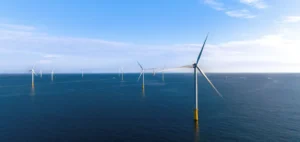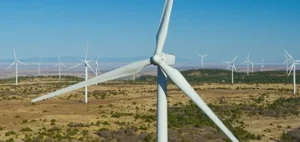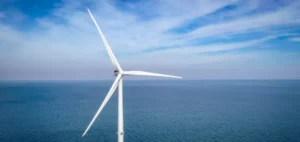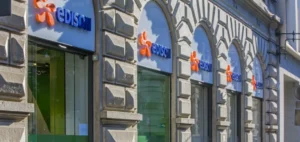The Bureau of Ocean Energy Management (BOEM) announced on Wednesday the revocation of over 3.5 million acres (1.4mn hectares) of offshore wind zones on the US continental shelf. This decision aligns with the Trump administration’s policy to end preferential treatment for energy sources considered unreliable and controlled by foreign rivals. The measure follows a presidential memorandum from January freezing federal approvals for all pending offshore wind projects pending federal review. The cancelled zones stretch from the Gulf of America to the Gulf of Maine, including the New York Bight, California, Oregon and the Central Atlantic.
Economic impact on a growing sector
This decision comes as the US offshore wind industry represents a market of 120,000 jobs and attracts tens of billions of dollars in annual investments. The target set by the Biden administration to deploy 30 gigawatts (GW) of offshore wind by 2030, enough to power 10mn homes, is directly compromised. Industry analysts estimate this capacity would have generated 77,000 direct and indirect jobs, with $12bn in capital investments per year. The American Clean Power Association estimates 17,000 jobs are already at risk from projects cancelled or suspended since the January executive order.
Potential federal revenues are also affected. Offshore wind zone auctions had generated record amounts, notably $4.37bn for the New York Bight in 2022 and $405mn for Massachusetts zones in 2018. Wood Mackenzie estimated future auctions could have raised between $1.6bn and $2.7bn for the US Treasury over four years, plus $1.1bn to $1.8bn in rents and operating fees.
Major projects suspended and compromised supply chain
Several large-scale projects are directly affected. Empire Wind off New York, with a capacity of 2,200 megawatts (MW) meant to power 700,000 homes, sees its construction suspended. Revolution Wind, the first multi-state project between Rhode Island and Connecticut with a capacity of 704 MW for 350,000 homes, faces potential delays of four years. Californian projects totalling 4.5 GW in the Humboldt and Morro Bay areas are in question, as are 195,000 acres off Oregon dedicated to floating wind technology.
The national supply chain is facing immediate repercussions. Sector development required $22.4bn in investments in domestic infrastructure, including the construction of four to six specialised installation vessels, each representing an investment of $250mn to $500mn. Ten new component manufacturing plants were planned, along with port upgrades valued at $500mn to $1bn. Prysmian Group has already abandoned plans to build a submarine cable factory in Massachusetts, which would have created 350 jobs.
US position in the global wind market
The United States risks losing its position in a market estimated between 1,800 and 2,465 GW by 2050, potentially representing 13% of global electricity demand. Wind currently accounts for 10% of US electricity production. China and Europe continue massive investments in the sector, with the United Kingdom planning 30 GW of offshore capacity, second only to China.
Thirteen US states had established targets totalling more than 112 GW of offshore wind by 2050. New York aimed for 9 GW by 2035, New Jersey 11 GW by 2040. These targets aligned with the previous administration’s commitment to reach 110 GW by 2050, including 15 GW of floating wind by 2035.
Industry reactions and regulatory implications
Seventeen states have filed lawsuits against the executive order, arguing a violation of established regulatory processes. The National Oceanic and Atmospheric Administration (NOAA) and the Marine Mammal Commission maintain that there is no scientific evidence linking offshore wind activities to whale mortalities, contrary to administration claims. Scientific data identifies vessel strikes and entanglement in fishing gear as the main documented causes of marine mammal mortality.
The industry highlights the inconsistency with the American energy dominance policy advocated by the administration. European developers such as Ørsted, Equinor and joint ventures involving Shell, BP and TotalEnergies are reassessing their US investments. Tax credits from the Inflation Reduction Act, essential to the projects’ economic viability, face growing uncertainty. This decision places the US at odds with global energy development as electricity needs increase with the expansion of data centres and artificial intelligence.






















